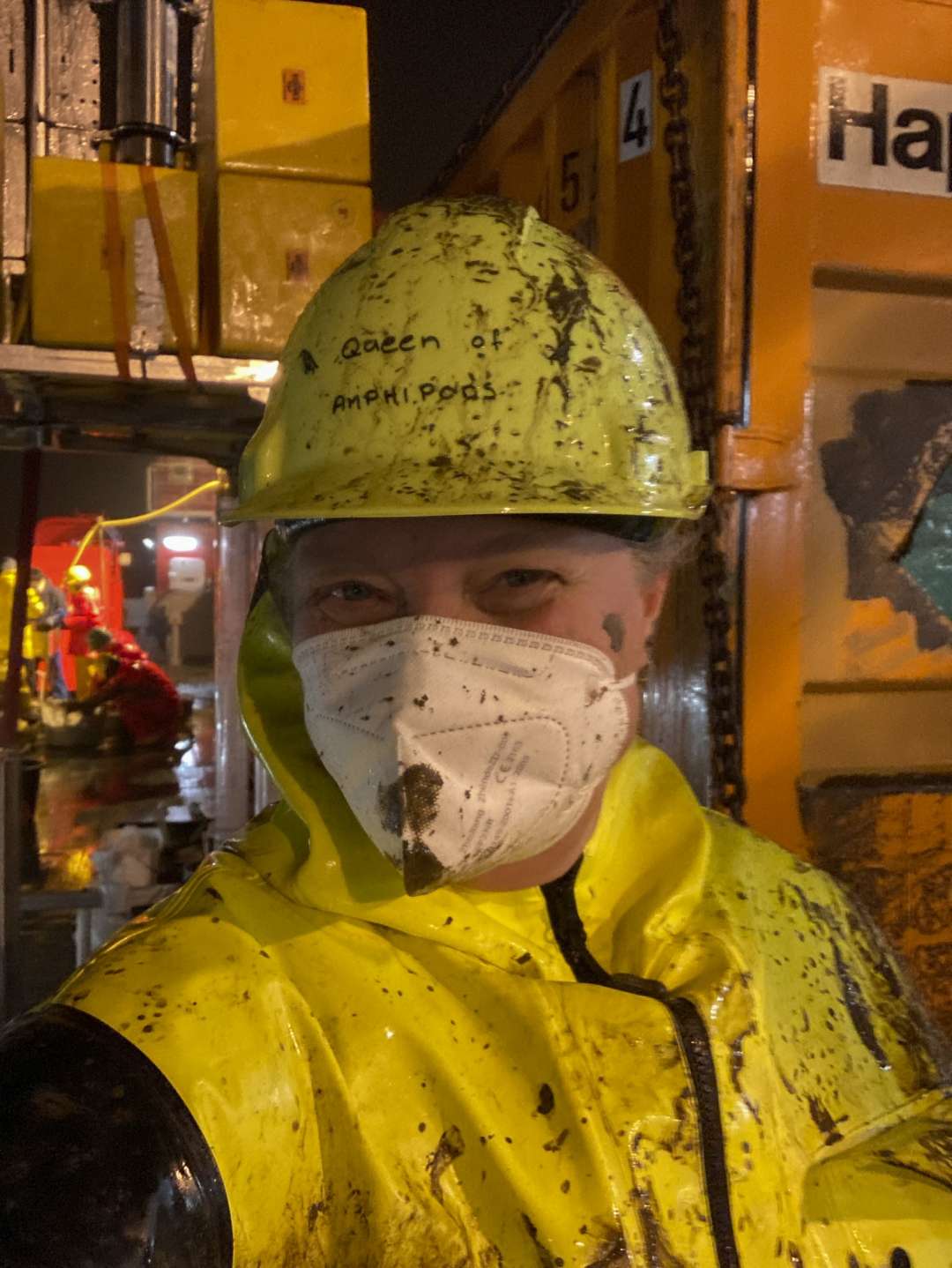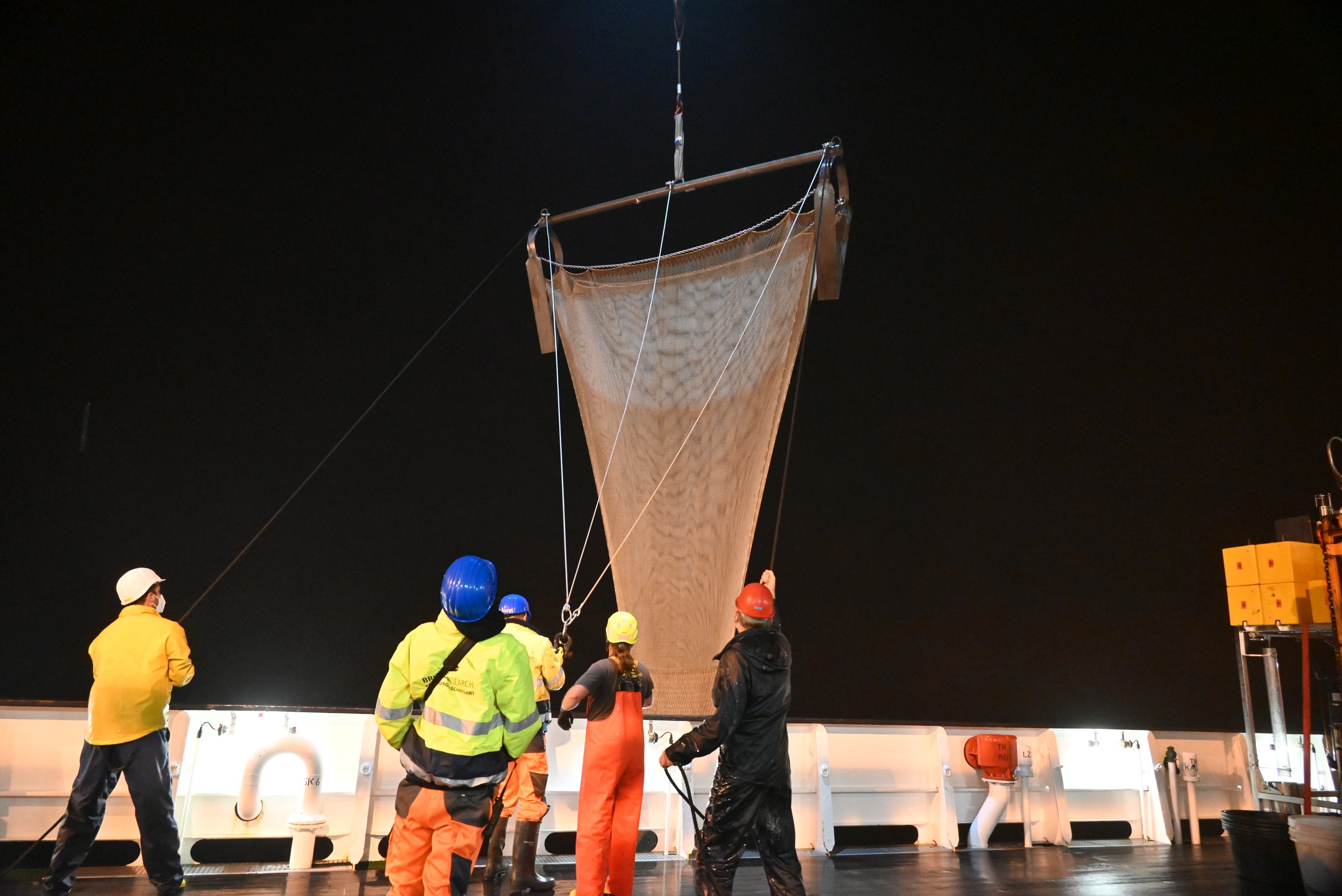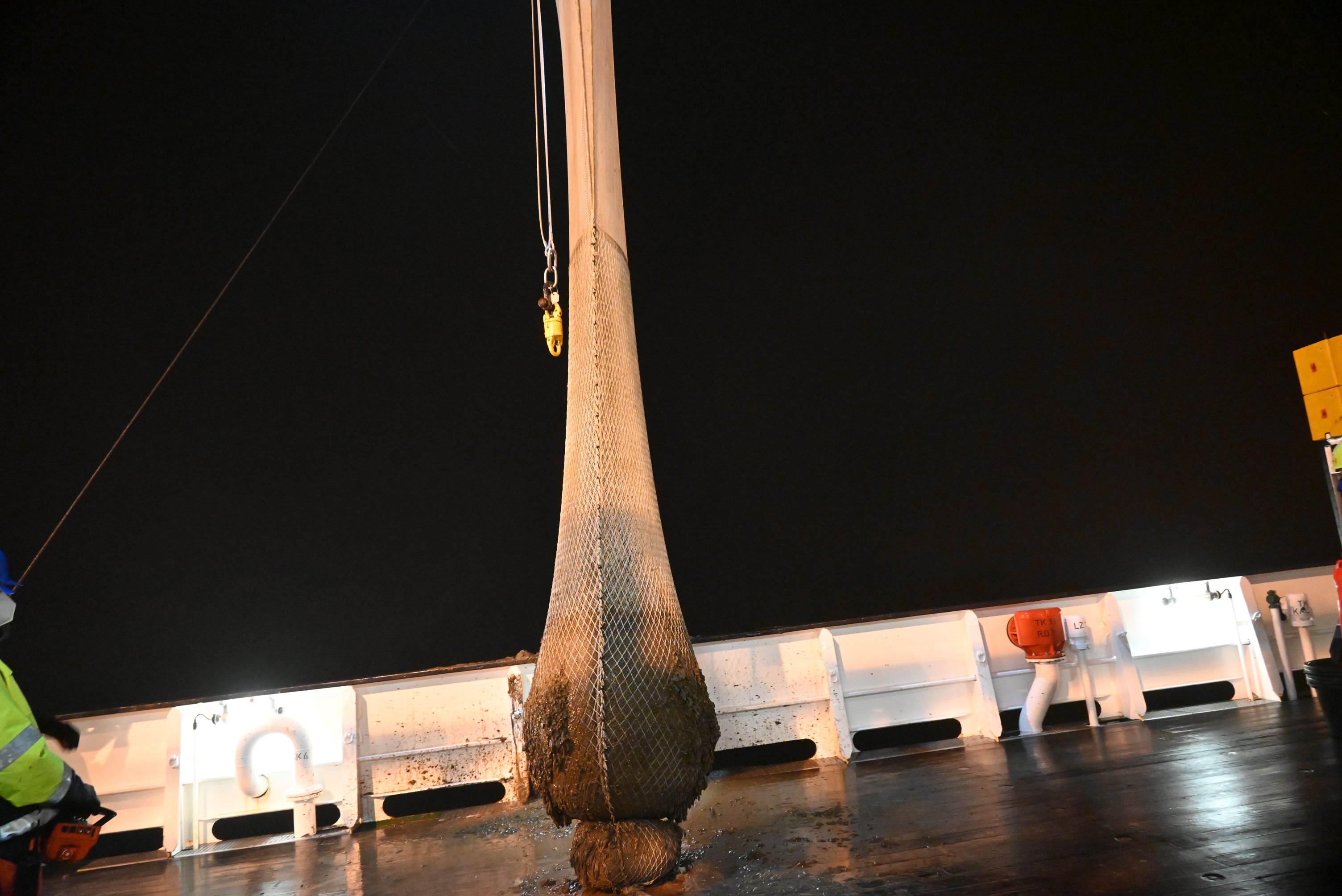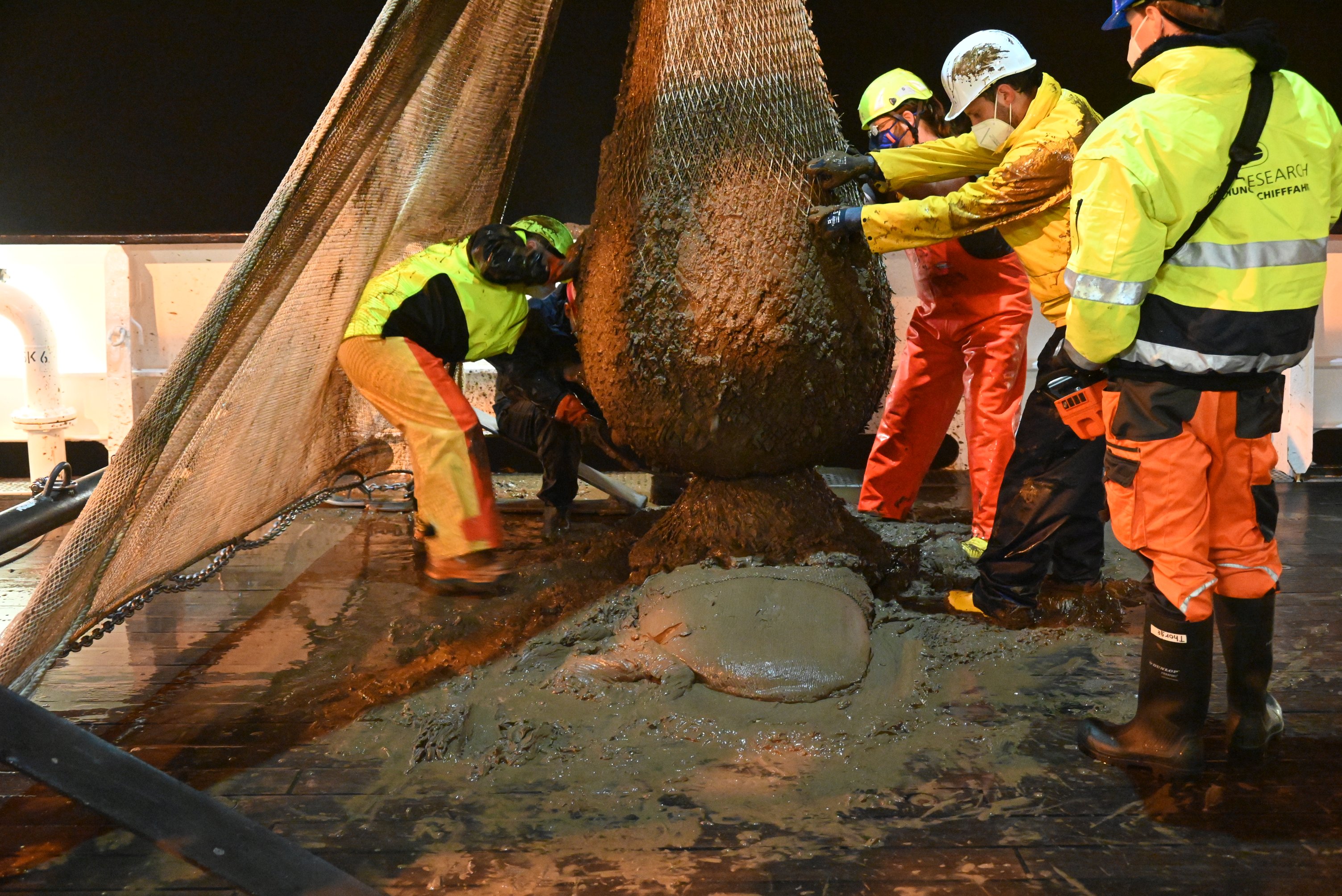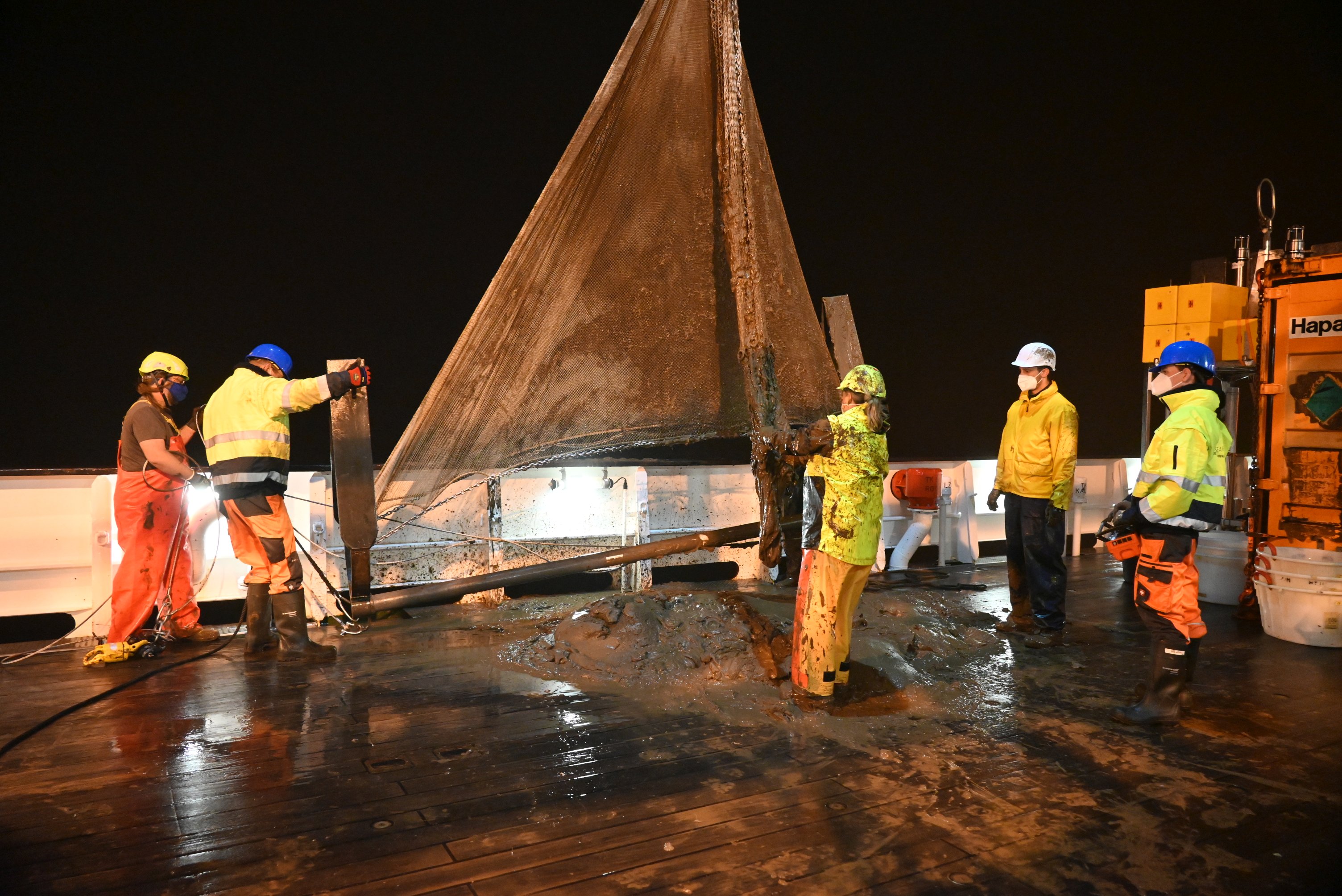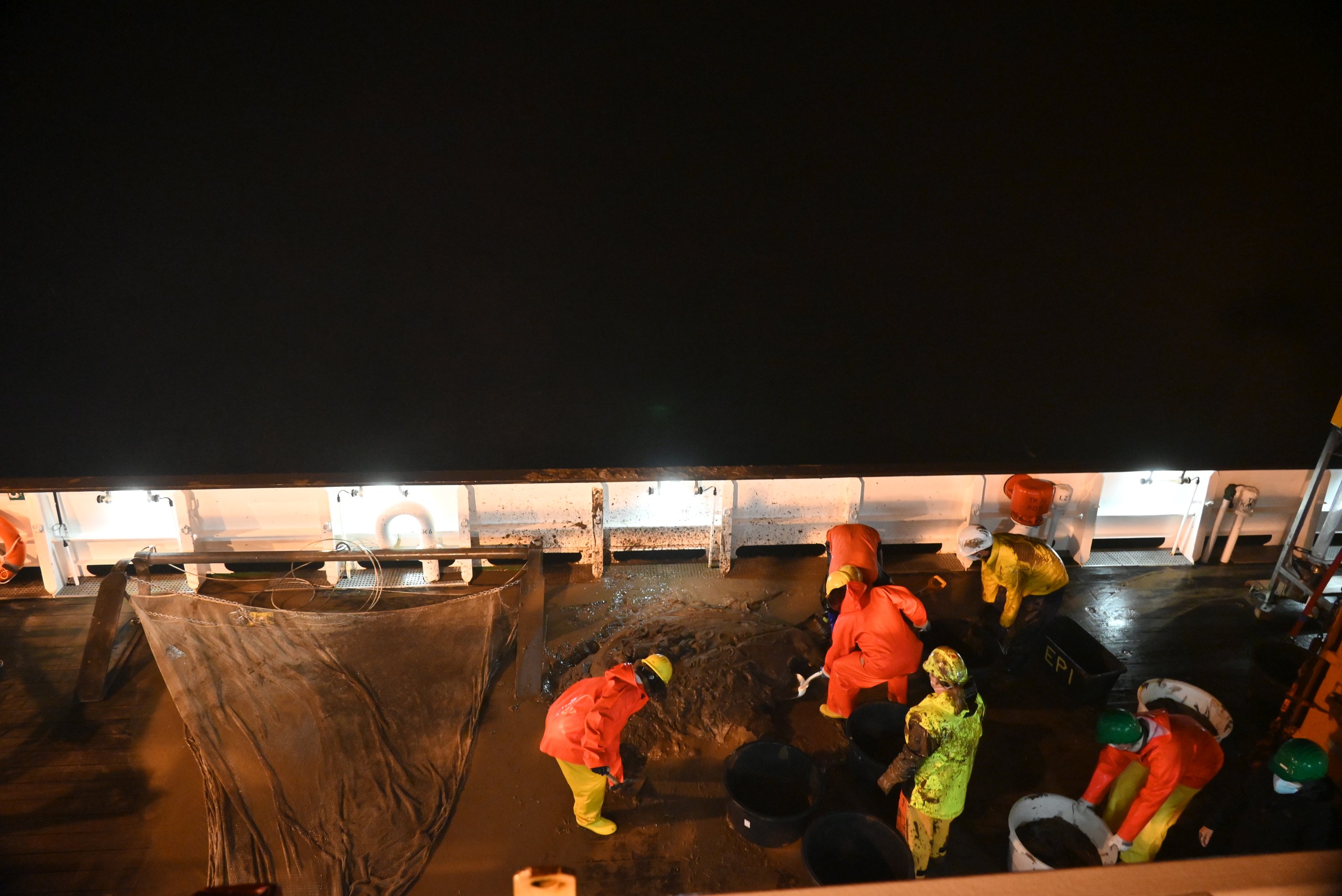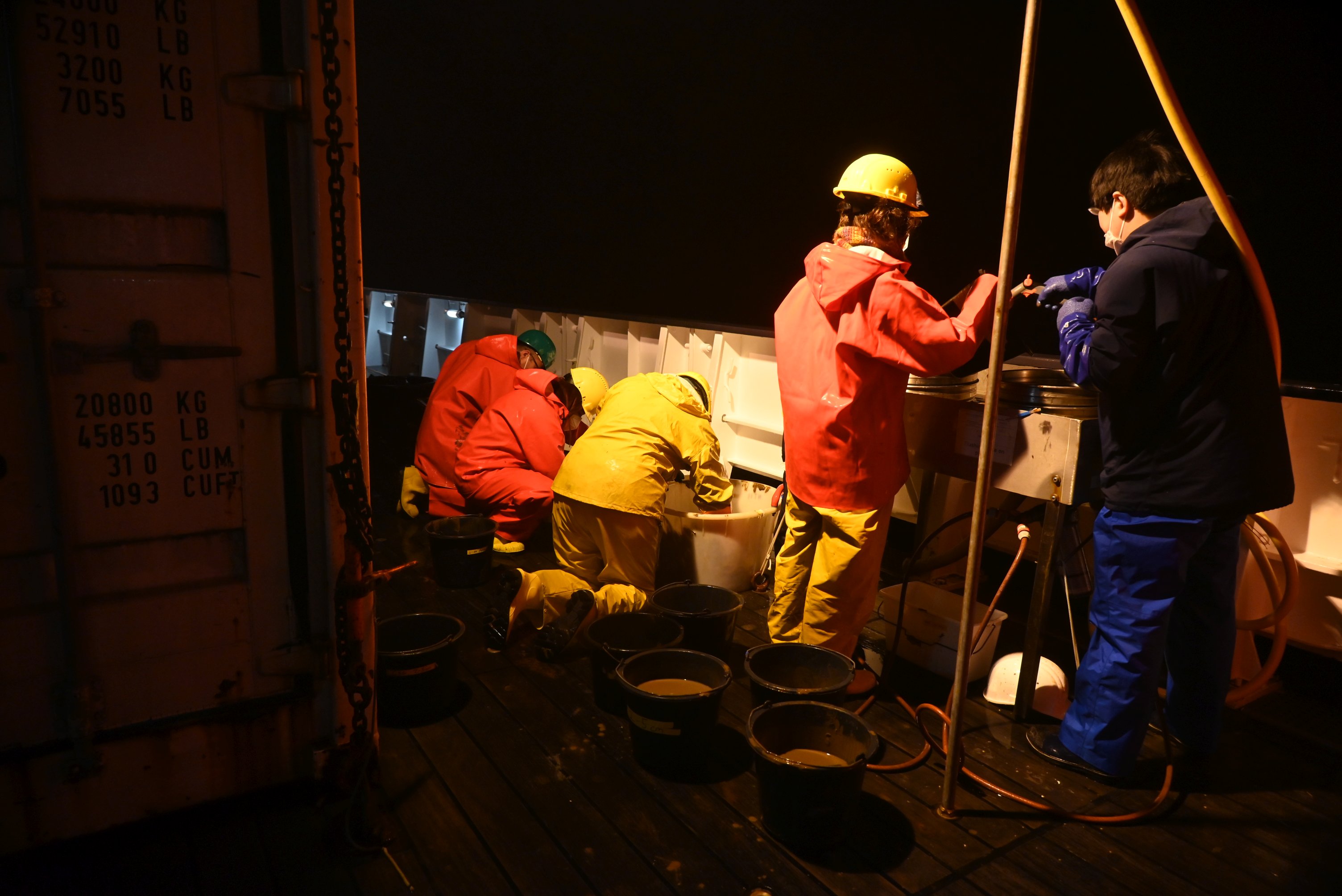There will be mud!
Being on a benthic sampling cruise includes a lot of experiences – from finding new friends and colleagues, some who might become lifelong friends, via working day or night (hopefully not both in the same 24 hours) and all days of the week for several weeks on end, to getting cold, wet and – let’s be honest here – sometimes quite dirty.
The deep seafloor is mostly muddy. Of course, you will be able to find those small pockets of non-muddy seafloor like seamounts or large boulders, but a lot of it is mud. I should probably not say “mud” as if I didn’t know better – if you ask a geologist, the soft sediments can have all sorts of names according to the grain size – silt, clay, mud, sand, etc. – but for simplicity, let’s say it all is more or less runny or sticky and looks like what we non-geologists will call mud when nobody is listening.
We look for the animals that live in, on and slightly above this sea(floor) of mud, and thus we do our best to bring quite a lot of it up on deck from the depths of the sea. Not all mud-habitats are the same – even when the grainsize is similar, even two areas that are quite close to each other will have a different subset of animals present. This is what we call patchiness – the distribution of species is not the same over an area. Think of us humans. Many of us like to live in cities, where we clump together in a small space, and then there are large areas where almost nobody live. This is also a patchy distribution. We can find this patchiness in the amount of specimens of one species, but also in the combination of species at one place. So, we have several sampling-areas, and at each area we deploy several different sampling-gears to understand as much as we can both about the separate species and about their abilities to live together in the same place or habitat. At this expedition I am co-responsible for the gear that brings up the most mud: the Agassiz trawl.
The Agassiz trawl is one of the gears we haul over the seafloor behind the ship. Empty, its weight is about 200 kg, which means that it sinks a little bit into the seafloor, and this gives us access to both the animals that live in the upper layer of the seafloor and the animals living on or right above the seafloor. The trawl is 3.5 m wide, and on average we pull it between 800 and 1000 m along the seafloor – this gives us 2800 to 3500 m2 of muddy bottoms we have the possibility to scrape along and bring up mud and animals. It is not unusual to bring back a ton (1000 kg) sample to the deck.
This is when the joy starts. Because, as biologists, we are of course much more interested in the animals in the mud than the mud itself, and so the sieving of the mud starts. We use lots of seawater (an easily available commodity here at sea) and flush the mud through a series of sieves – each with a smaller mesh-size, and this way we contain the animals and flush the sediments back to sea. This is where we in the Agassiz-group get wet and muddy, and if we don’t move enough, we get cold. Sieving mud is hard work, though, so as long as we have enough energy, we are OK. Some of us sing to keep the rhythm going, some try to not listen to the singing and others again find the rhythm meditative and can find peace and tranquility through work. The days we have a trawl sample are days we don’t need to go to the gym, and if only that mud had been of the cosmetic kind (which it is not, sadly), we would all have beautiful skin after all the splashes.
You might think we are back in kindergarten playing with mud and water – but we assure you: we are not childish, only young at heart… And the beautiful animals we find at the end of all the sieving make it all worth the long hours. I am sure several of the other blogs will be about these animals, so stay tuned! I am off again to wash more mud, for as long as we sample from these deep seafloors there will always be mud.
Anne Helene S. Tandberg, University Museum of Bergen, Norway
